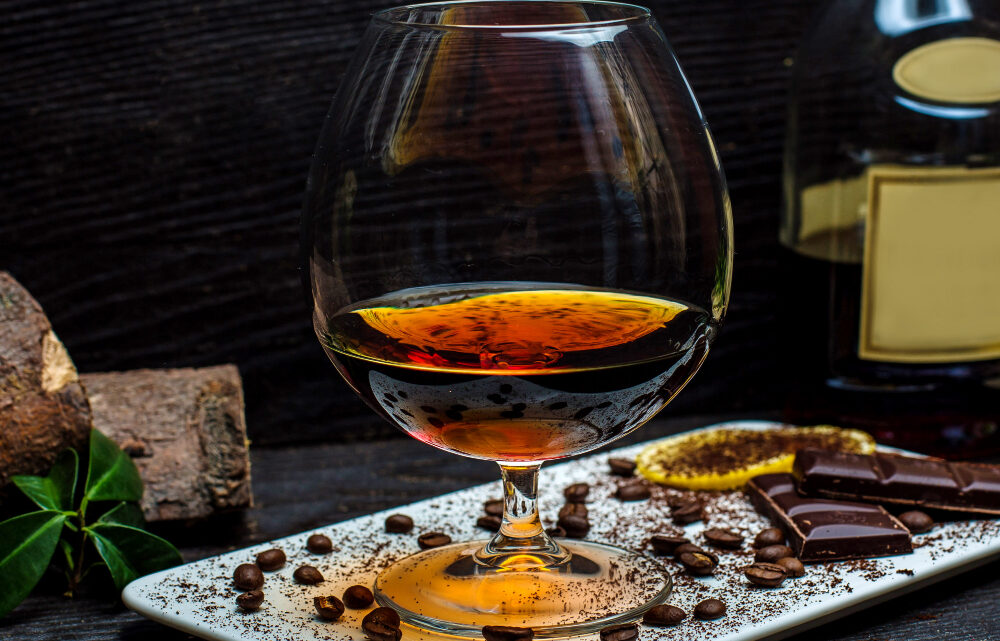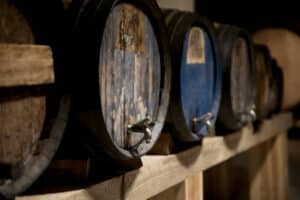Chemical and sensory profile of rum: the chemical compounds present and how they contribute to its taste and aroma

Rum, a distilled drink that has been celebrated in songs, literature and on the tables of many cultures, has roots that are lost in time. Although it is commonly associated with the Caribbean, its origin and evolution are intertwined with the history of colonization, trade, and revolution.
Brief historical tour
The history of rum is as old as that of sugar cane, the plant from which it is distilled. The ancient Persians and Arabs already knew distillation techniques and probably made alcoholic beverages from sugars. However, it was in the Caribbean sugar cane plantations of the 17th century that rum began to acquire its current identity.
With the arrival of European settlers in the Americas, the demand for sugar grew exponentially. Plantation workers soon discovered that honeydew, a byproduct of sugar production, could be fermented and distilled to produce alcohol. This was the birth of the rum we know.
Cultural and economic importance of rum
Rum soon acquired economic and cultural importance in the Caribbean. It became a bargaining chip in the infamous Trade Triangle, where Europe shipped manufactured goods to Africa, Africa shipped slaves to the New World, and the Caribbean shipped sugar and rum to Europe.
Culturally, rum took deep root in Caribbean life. It became the drink of choice for sailors and pirates, giving rise to myths and legends. Rebellions and revolutions also had rum as a companion, being a symbol of resistance and freedom in many colonies.
Rum has also made its mark in literature and music, from Caribbean folk songs to classic novels evoking the era of pirates.
Today, rum is a global beverage, enjoyed in classic cocktails such as Mojito and Piña Colada, or simply alone. Behind every sip, however, is a rich and complex story that speaks to cultures, conflicts, and celebrations.
Rum making process: from sugar cane to distillate
Rum, with its rich palette of flavours and aromas, is the result of a meticulous brewing process that has been perfected over centuries. From fresh sugar cane to barrel-aged distillate, each stage brings distinctive characteristics to this iconic drink.
The raw material: sugar cane
Sugar cane is the basis of rum. Believed to have originated in Southeast Asia, this tropical plant has found its ideal home in the warm, humid climate of the Caribbean. After being harvested, the sugarcane is crushed to extract its juice, which is sweet and sticky.
Fermentation and its influence on the sensory profile
Once the juice has been extracted, the fermentation process begins. To do this, the juice is transferred to large vats or barrels where yeasts are added. These yeasts consume the sugar present in the juice and convert it into alcohol. Depending on the yeast variety and fermentation conditions, different aromatic and taste profiles can be developed in rum.
This process usually takes between 24 and 72 hours, resulting in a “cane wine” with an alcohol content of approximately 5-7%.
Distillation: Creating the Character of Rum
Distillation is the next step. The aim is to separate the alcohol from the “cane wine”, concentrating and capturing the desired flavours and aromas. This is achieved by heating the liquid in a still. Alcohol evaporates at a lower temperature than water, so it can be separated and collected as a vapour.
There are several methods and types of stills, each with its own impact on the taste of rum. For example, the column still produces a lighter and cleaner rum, while the pot still results in a more robust and full-bodied distillate.
Aging: How Barrel Transforms Flavor
Not all rums are aged, but those that are acquire additional nuances of flavor and aroma due to contact with the wood of the barrels. During aging, rum absorbs wood compounds, such as tannins and lignin, which give it darker colors and more complex flavors. In addition, the interaction with the air through the barrel softens and rounds the profile of the distillate.
Aging time varies, from a few years to decades. The choice of the type of barrel, previously used to age other spirits or wines, can also influence the final character of the rum.
The process of making rum is an art that combines tradition, technique and time. Each stage plays a crucial role in defining the sensory profile of this beverage, from the fresh notes of sugar cane to the complex aromas of aged rum.
Prevailing Chemicals in Rum
The magic behind the bouquet of flavours and aromas found in rum is due to a vast combination of chemical compounds. These compounds are the result of natural processes such as fermentation and aging, and their proportion and nature can vary depending on the type and method of rum production. Let’s look at the most prominent compounds:
Esters and their influence on aroma
Esters are compounds that are formed primarily during fermentation and distillation. They are responsible for many of the fruity and floral aromas of rum. For example, ethyl acetate produces an aroma of fresh fruits, while other esters can provide notes reminiscent of pineapple, banana or even flowers.
Aldehydes: providing characteristic notes
Aldehydes are another group of volatile compounds present in rum. They contribute aromas ranging from sweets and almonds to herbal nuances. For example, cinnamic aldehyde can provide a spicy aroma, similar to cinnamon.
Acids and alcohols: their role in the profile of rum
During fermentation, in addition to esters, acids and alcohols are produced. Acetic acid, for example, can add a slightly sour or vinegary taste to rum, while alcohols such as propanol and butanol can influence the “texture” or “body” of the drink.
Furfurals and phenolic compounds
These compounds come mainly from the aging process in wooden barrels. Furfurals provide caramel and almond notes, while phenolic compounds can give rum smoky or vanilla characteristics.
Other components and their impact on flavour
There are hundreds of other compounds in trace amounts that, although present in small amounts, can have a significant impact on the flavor and aroma profile of rum. These include terpenes, lactones and other esters and aldehydes. The presence and concentration of these compounds will depend on the production method, the type of yeast used, the duration of fermentation, the type of still and the aging process.
Rum is a chemical symphony that reflects its production process and the decisions made by the master rum maker. This chemical complexity is what makes each rum unique and has its own character and personality.
Chemical and sensory differences between types of rum
Rum is a diverse category, with different types and styles varying according to its production process, ageing and geographical origin. This diversity is reflected not only in their chemical profile but also in their sensory experience. Next, we explore the differences between various types of rum.
White rum: characteristics and profile
Chemical: White rum, also known as light rum or silver rum, usually goes through a filtration process after distillation that removes impurities and colors. Therefore, it has a simpler chemical profile, with fewer compounds derived from aging.
Sensory: It is a milder and more neutral rum, with a predominance of fresh flavours and notes of sugar cane. It is ideal for cocktails due to its versatility.
Golden or aged rum: ageing and complexity
Chemical: This type of rum has spent time in barrels, usually oak, which gives it a wider range of compounds such as furfurals and phenolic compounds. Contact with wood introduces elements such as tannins and lignin.
Sensory: Offers a broader and more complex spectrum of flavours than white rum. Notes of caramel, vanilla, spices, and dried fruits are common. Texture may be softer and velvetier.
Dark rum: intensity and richness
Chemical: Dark rums tend to age for longer periods and, in some cases, caramel is added to intensify their color. Prolonged aging introduces a greater variety and concentration of wood-derived compounds.
Sensory: They are robust and rich rums with a deep flavor. You can find notes of chocolate, coffee, tobacco and ripe fruits. These rums are often enjoyed alone or with a little ice to appreciate their complexity.
Special or premium rums: uniqueness in the sensory palette
Chemical: Premium or specialty rums are usually carefully selected blends from different barrels and ages. They may have unique chemical profiles due to special production processes, unique yeasts or distinctive distillation methods.
Sensory: These rums stand out for their balance, depth and uniqueness. Notes can vary widely, from floral and fruity to spicy and woody, depending on their origin and production process.
The type of rum largely determines its chemical and sensory profile. Although all rums share a common DNA derived from sugar cane, the decisions made during their production and aging make them distinctive and unique in flavor and aroma.
Modern sensory analysis techniques
Sensory analysis is a discipline that combines science and technique to evaluate the organoleptic properties of a product through the human senses: sight, smell, taste, touch and hearing. With the advancement of technology and a growing demand for high quality products, modern sensory analysis techniques have emerged that allow for more accurate and objective evaluation. Here are some of the highlights:
1. Quantitative Descriptive Analysis (QDA)
Description: It is a structured method in which a trained panel evaluates and quantifies the sensory characteristics of a product.
Application: It is mainly used to describe in detail the sensory profile of a product and compare different products with each other.
2. Affective tests
Description: These tests are based on the opinion of real consumers and focus on the acceptability and preference of the product.
Application: They are useful for new product launches, reformulations or comparisons with competitors.
3. Temporal Sensation Analysis (TDS)
Description: This technique looks at how sensations evolve over time as the product is consumed. That is, it records the intensity of a sensation from first contact to its disappearance.
Application: It is used in products that have a remarkable evolution in the mouth, such as beverages, chocolates or wines.
4. Dynamic Perception Analysis
Description: Similar to TDS but with a focus on how sensations interact and change over time.
Application: It is useful for complex products with multiple interrelated sensations.
5. Eyetracking
Description: This technique uses eye-tracking technology to observe where the consumer’s gaze is focused when interacting with a product or its packaging.
Application: It is valuable for packaging design, advertising and usability studies.
6. Facial Analytics
Description: Through cameras and specialized software, participants’ facial microexpressions can be captured and analyzed while testing a product.
Application: This technique is used to evaluate emotional and subconscious reactions to flavours, aromas or textures.
7. Biometry and Physiological Responses
Description: Physiological responses such as skin conductance, heart rate or temperature are measured to evaluate reactions to a stimulus.
Application: Can be used in product testing to determine levels of arousal or relaxation.
8. Virtual Reality (VR) and Augmented Reality (AR)
Description: These immersive technologies can simulate consumption or product interaction environments.
Application: They are useful for studies that require a specific context of consumption or to test product prototypes.
In conclusion, sensory analysis has evolved beyond traditional testing. Modern techniques allow deeper insights into how consumers perceive and react to products, combining science, technology and psychology. These techniques are crucial in the food and beverage industry to ensure products meet consumer expectations and preferences.
How external factors influence the sensory profile
The sensory profile of a product is not only determined by its own components and characteristics, but also by a number of external factors that can modify consumer perception. These factors are key to understanding why a product may be perceived differently in different circumstances or by different people. Some of these factors and how they may influence the sensory experience are described below:
1. Tasting environment
– Lighting: Light can affect a product’s color perception and appearance. A dim or yellowish lighting can modify the visual appreciation of food and beverages.
– Temperature: The room temperature can affect the volatility of some compounds, influencing the aroma and taste. For example, a wine served at the wrong temperature may lose some of its bouquet.
– Noise: A noisy environment can distract and affect the ability to concentrate on tasting, reducing the perception of subtle nuances.
2. Cultural and social context
– Cultural expectations: Culture influences preferences and aversions towards certain flavours and textures. What is pleasing to one culture may not be pleasing to another.
– Social influence: The opinions and reactions of those around us can influence our perception. If everyone praises a dish, it is likely to be perceived more favorably.
3. Psychologic Factors
– Mood: Humor can influence sensory perception. If a person is sad or anxious, they may perceive flavors differently.
– Memory and associations: Memories related to certain aromas or flavors can evoke emotions that influence current perception. For example, a scent reminiscent of childhood can be perceived with nostalgia and affection.
4. Physiological factors
– Age: With age, the amount and sensitivity of taste buds and olfactory cells can decrease, altering the perception of flavours and aromas.
– General health: Diseases or medications can affect the sense of taste and smell. A cold, for example, can decrease the ability to perceive aromas.
5. Presentation and Packaging
– Visual appearance: The color, shape and presentation of the product can create expectations that influence perception. A well-presented dish is often perceived as tastier.
– Packaging: The appearance, colors and texts of the packaging can generate expectations about the content. Elegant or premium packaging can make a product perceived as higher quality.
6. Previous Expectations
– Brand and advertising: The expectations created by the brand or advertising can influence the actual perception of the product. If a product is expected to be of high quality because of its brand, it is likely to be perceived that way.
– Price: Higher price is often associated with higher quality, which can influence taste perception and overall experience.
In short, sensory experience is a complex process that goes beyond the intrinsic components of the product. External factors play a crucial role and must be considered, especially in sensory research and testing, to gain a full understanding of consumer perception.
Conclusion
Each bottle of rum is the result of a perfect synergy between science, art and nature. Just as alchemy seeks the transmutation of elements into gold, the production of rum transforms sugar cane into a golden liquid full of nuances and complexities.
The rum journey begins in the vast cane fields, where the sun and soil infuse the plant with its characteristic sweetness. From there, through fermentation and distillation processes, the juices are concentrated and refined, giving rise to a distillate full of possibilities. However, true magic often happens in silence, in oak barrels, where time and wood dance together to create aromas and flavours that enchant the palate.
In addition to its chemical composition, we have seen how external and sensory factors profoundly affect the perception and appreciation of this distillate. From the atmosphere in which it is tasted to cultural and personal expectations, everything influences the final experience.
Rum, in its diversity, is a reflection of the regions and cultures it comes from, with each type offering a palette of distinctive flavours and aromas. It is a testament to the skill and passion of master rum makers who, over the years, have perfected the art of distilling, blending and aging to offer the world a drink of unparalleled character.
In short, each bottle of rum is not just a container with liquid, but a capsule of time and space, which houses stories, traditions and the legacy of generations. Sipping a drink invites us on a sensory journey, discovering the alchemy behind every drop and celebrating the wealth of experiences this spirit has offered the world.
Sources
1. University of California, Davis – Viticulture and Oenology
4. Institute of Food Technologists (IFT)
6. PubMed
Featured image: Freepik
About The Author
Camilo is an audiovisual communicator with over 15 years of experience. He resides in Caracas, Venezuela, and has studied film and television, acquiring skills in writing film scripts. He currently works as a Digital Content Manager at TRL. If you would like to see his portfolio, you can visit his website at http://ccesarino.com.













